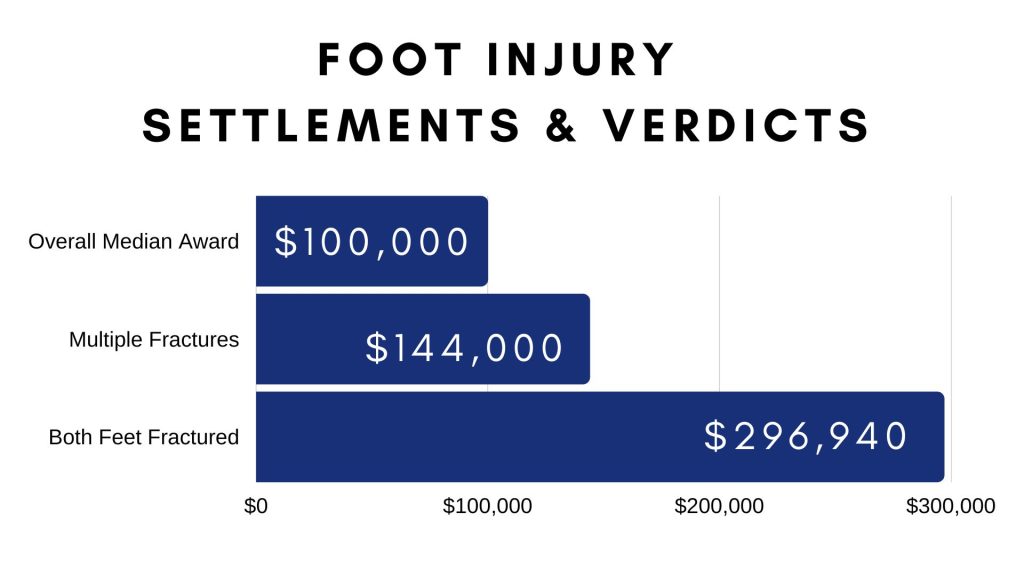According to a recent Jury Verdict Research analysis, based on plaintiffs’ verdicts nationally over the last ten years, the overall median award for foot injuries is $98,583. Multiple fractures to the same foot increase the median to $144,000. In foot injury cases where both feet are fractured, the median rises to $296,940.
Another Jury Verdict Research study found that 39% of the foot injury cases that go to verdict involved auto, truck, or motorcycle accidents. In fact, a full 11% of these injuries were in motorcycle accident cases. This is incredibly high given the number of driver miles on a motorcycle versus the number logged in cars and trucks. Then again, your risk of dying in a motor vehicle accident is 28 times more likely if you are riding a sports bike than if you are enjoying the comforts of a car or truck. (The lesson, as always: don’t ride a motorcycle.)

Overall, according to one study, the average (as opposed to the median) foot injury award was $703,703. Thirteen percent of foot injury awards were in excess of $1 million.
 Maryland Lawyer Blog
Maryland Lawyer Blog

